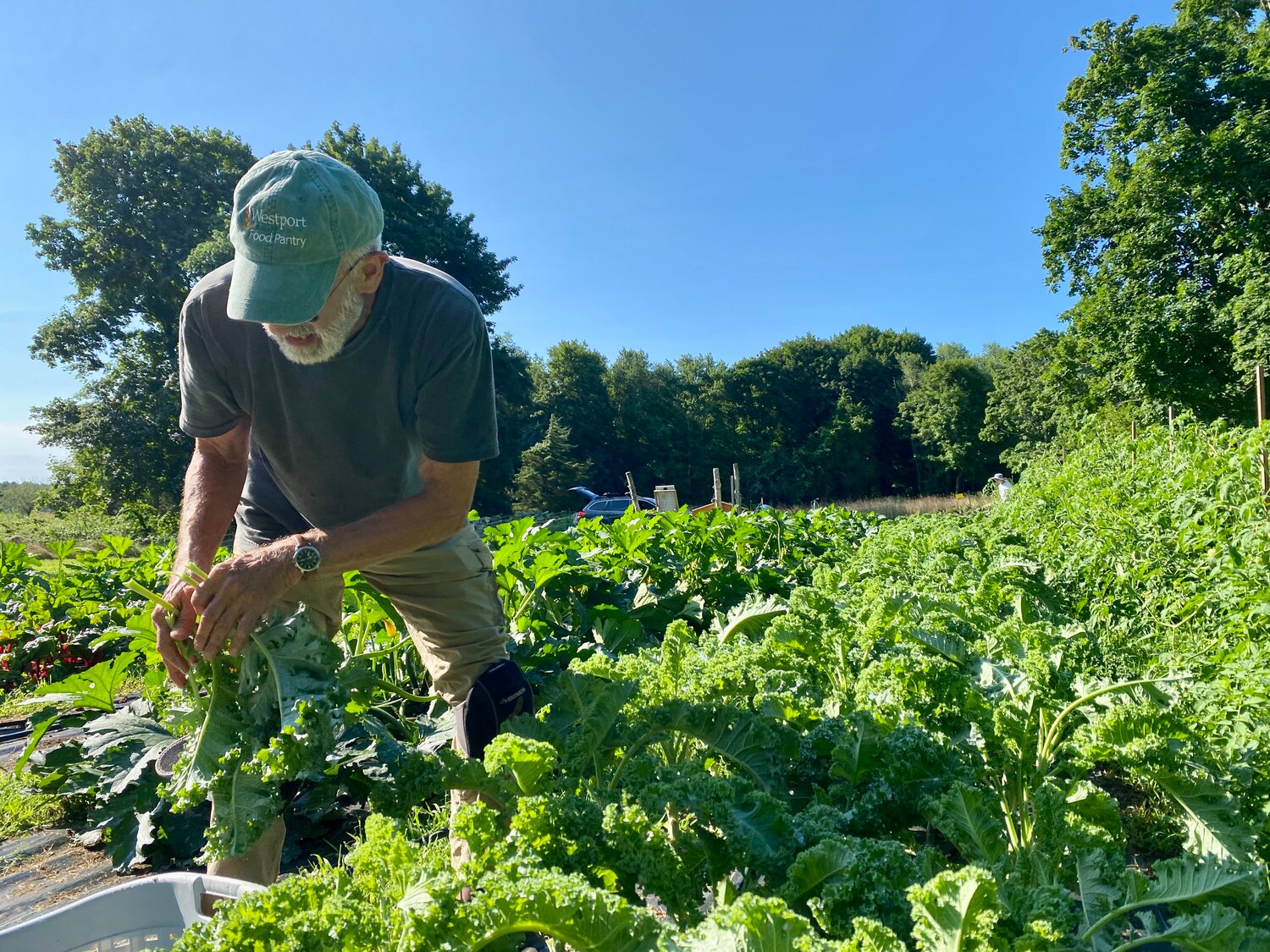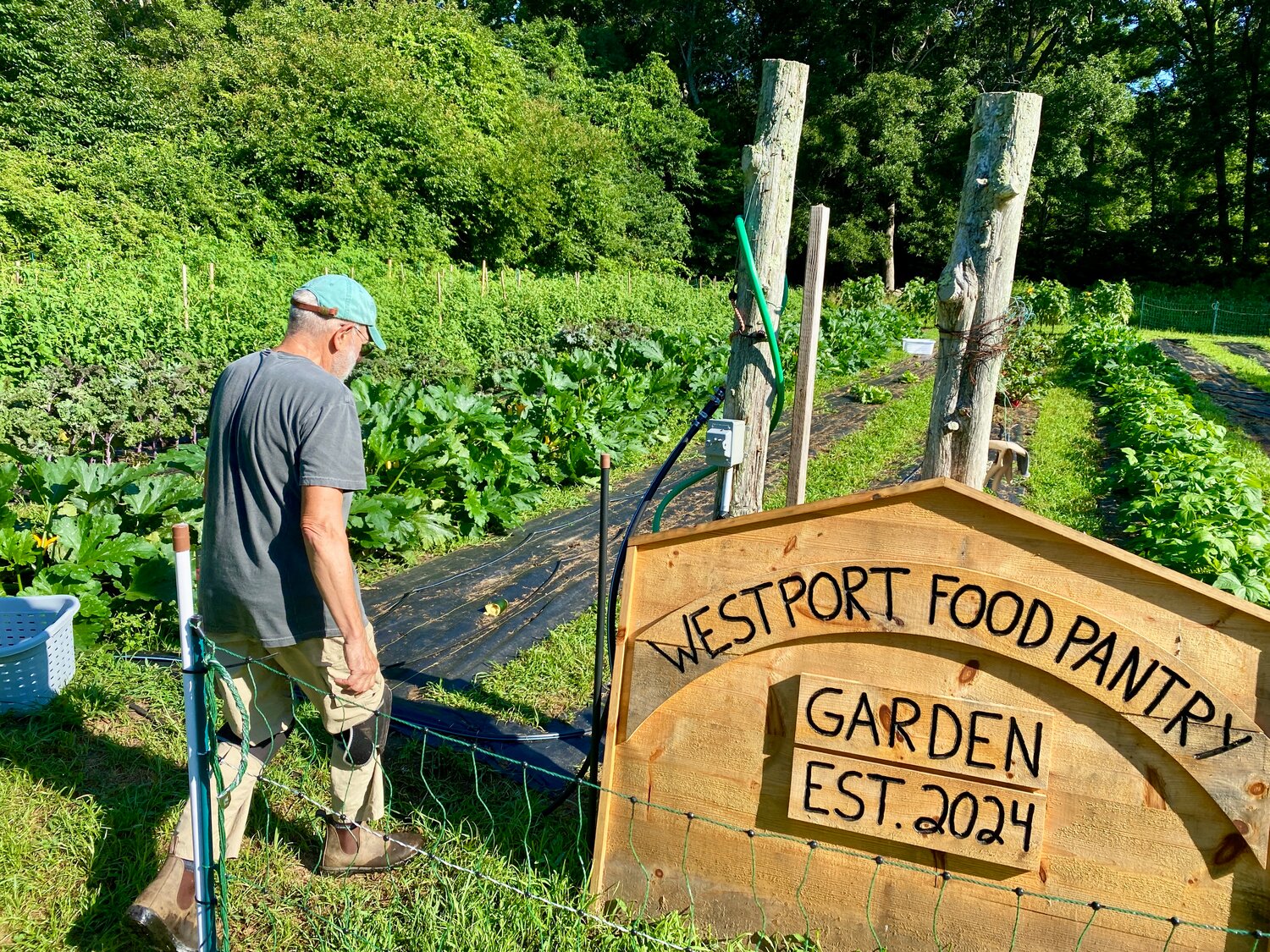Westport Town Farm farms again
Westport Food Pantry is growing its own produce at Drift Road plot
It had rained a few days earlier, so by Friday morning the zucchini had gotten huge — some five pounds or more. The swiss chard was thick, rich green and a beautiful deep pink at the stem, the …
This item is available in full to subscribers.
Please log in to continue |
Register to post eventsIf you'd like to post an event to our calendar, you can create a free account by clicking here. Note that free accounts do not have access to our subscriber-only content. |
Day pass subscribers
Are you a day pass subscriber who needs to log in? Click here to continue.
Westport Town Farm farms again
Westport Food Pantry is growing its own produce at Drift Road plot
It had rained a few days earlier, so by Friday morning the zucchini had gotten huge — some five pounds or more. The swiss chard was thick, rich green and a beautiful deep pink at the stem, the kale growing like crazy. The tomatoes were another story. They were still all green, with a ways to go.
“Don’t worry,” Stephen Clayton said. “They’re coming.”
Clayton is a board member at the Westport Food Pantry, a non-profit based out of the Westport Grange that has served thousands of Westport and nearby residents since its founding during the pandemic. Friday morning found him where he and other volunteers have spent a good amount of time this spring and summer, at the pantry’s new 8,000-square-foot plot at the Westport Farm Town on Drift Road.
Cultivated for the first time this year by pantry volunteers, the plot is part of the pantry’s solution to getting more healthy, locally grown produce in the hands of residents who might not otherwise be able to afford it. Since they started harvesting in early July, volunteers have weighed nearly 800 pounds of produce; last week, they took about 375 pounds of vegetables and gave it all away on weekly food distribution day the following Monday.
Members of the select board last fall approved the pantry’s sublease of the plot, which though owned by the town is managed by the Trustees of Reservations. It’s the first time the land has been farmed in years.
“I think it sounds like a phenomenal use, just getting back to what the original intent was,” select board member Shana Teas said when the issue came before the board and earned unanimous approval.
Community effort
Clayton loves to garden but to this point had never farmed anything larger than backyard plots. The farm has been a learning curve, he said, but he is thankful that the pantry has had much community support and help.
There is a small but dedicated corps of volunteers who help with the harvest every Wednesday and Friday. Donations to get the effort off the ground have been crucial, he said, and considerable support and mentorship has come from The Neighborhood Farm further up Drift Road.
“They’ve been great,” Clayton said of the farm — providing expertise, advice, seedlings, storage space, food for thought and a walk-in cooler to keep the produce cool until it can be given away each Monday.
“This effort wouldn’t have happened without them,” Clayton said.
The garden is surrounded by a solar-powered electric fence to keep the deer out. Inside, irrigation hoses run up and down the rows. Everywhere it’s lush, and Clayton provides a progress report:
“Lettuce is gone, various different types,” he said. “We’re done with those and we’re going to replant. Kale and swish chard are ongoing, zucchini and cucumbers. We have tomatoes galore and we have bush beans planted, they’re coming along nicely. Summer squash and delicata squash — no fruit on those guys yet.”
As of this writing, only about half of the plot was planted, but this week or next, volunteers will expand to the fallow rows and plant more lettuce, plus spinach, carrots and radishes.
Back to its roots
The pantry’s effort brings the town farm’s use closer to what it was for more than 100 years.
The property is the site of the old poor house, sometimes referred to as the workhouse, almshouse or asylum. The evolution of the place began as early as the late 18th century, when in 1795 the town accepted bids for the care of paupers.
According to a history of the property written by Westport Historical Society executive director Jenny O’Neill, the current farm came to be in 1824, when the town voted to purchase the Wilcox Farm, established in 1720, and repurpose it as an almshouse.
“For 125 years this site was home to Westport’s poor, intemperate, insane, and elderly,’” O’Neill wrote. By the late 19th century, the farm sold eggs from 222 chickens, milk from seven cows, pork, and had subsistence farming of vegetables and crops.
Though many similar farms closed their doors in the early 20th century, “Westport is notable for being one of the last towns, by many decades,” to close, O’Neill wrote.
In the decades following, it became a home for the elderly known as Dea Rest, but in the late 70s, there was a successful effort to convert the almshouse to self-supporting rental housing.
The property entered its current age in 2006, when the Trustees took over the town farm's management. A few years later, it became the site of a productive community farm, but that use has long since ended and apart from a farmer who worked it for a few years in the 2010s, farming had all but ceased on the property before the pantry came along.
“It’s about community”
In many ways, the pantry’s vision for the farm mirrors that of its historical use, to provide for the citizens of Westport. Apart from supplying healthy food to those who need it, Clayton thinks it goes deeper still — “It’s all about community,” he said. “If we can get people together, even if they’re different or have different viewpoints, it really develops a sense of community.”
He hopes the weather continues to stay warm, with plenty of rain, towering crops, bountiful harvests and stuffed food bags.
Help grow the farm
The non-profit Westport Food Pantry started its farm effort on a shoestring, and there is always a need for support from the community, even if you can’t come out and pick squash. Donations are always welcome, Clayton said, and he wishes he had more volunteers. Also needed are funds to build a walk-in cooler at the Grange hall at 931 Main Road. In addition, Clayton would love to have funds to build a small shed at the plot, so supplies and equipment can be stored onsite and won’t have to be lugged back and forth from other locations.
For more information on the pantry, or to learn how to help, see www.westportfoodpantry.com, or send an e-mail to westportfoodpantry@gmail.com.









